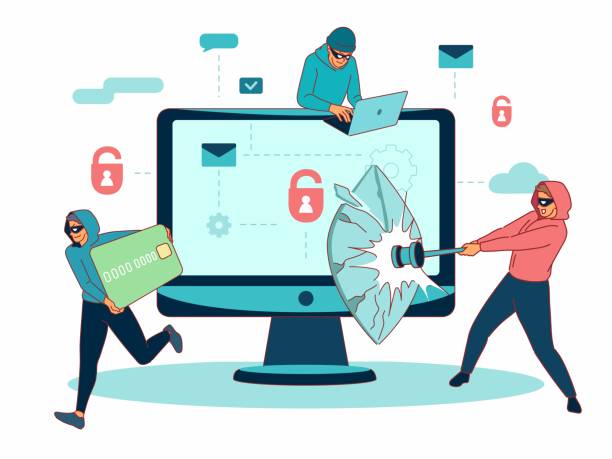What Is Smishing? Understanding SMS Phishing and How to Stay Protect
What Is Smishing? Understanding SMS Phishing and How to Stay Protect

Smishing is a variant of cyber-raid that misuses SMS (Short Message Service). The text messages in order to dupe individuals into providing personal information. what is smishing in cyber security Clicking on malware links and installing malevolent software. Smishing is a portmanteau of SMS and phishing. Its name stresses that the phishing attack is delivered via text messages.
Smishing exploits the trust that most people place in text messages. More than email-based phishing attacks. That most users have been educated about. And given that the number of smartphones worldwide. Which are capable of receiving text messages with any number exceeding 3.5 billion. The potential audience of attackers is massive. This widespread accessibility of smishing turns. It is an effective tool of credential stealers. Banking information thieves. And other personal data robbers among cybercriminals.
Mechanics of Smishing
A smishing attack usually occurs in the following steps:
Target Selection
Cybercriminals select their targets, And they are either random and selected due to the information acquired. In the last breaches or the dark web. Message Crafting: surgical tech salary Texas The attackers create false text messages. Which appeals to emotion such as a sense of urgency. Fear and curiosity. The messages usually claim to be popular organizations like banks, delivery organizations and government organizations.
Message Delivery
The attacker uses the SMS gateways, spoofing applications/services and compromised computers/mobiles to execute. The smishing message to their victims of choice. User Interaction: Once the message has been received. It asks the user to perform some action. what is smishing in cyber security clicking a link, Responding with personal information and by calling a specific number. Data Collection and Malware Deployment: In case of compliance the victim can be redirected to a phony site. To give personal data or install malware unintentionally.
Smishing Attack Types
There are several types of Smishing attacks. That is usually aimed at manipulating. different human psychological factors and trust:
Account Verification Scams
The victim is contacted and told that their account has been compromised security wise. It is being accessed suspectedly by a well known company or service provider. Once the user clicks the given link. he/she is forwarded to a fake log-in page, where the data is stolen.
Prize or Lottery Scams
Scammers contact their victims and tell them. That they have won a prize, lottery and sweepstakes. They are required to give personal details, and pay a small fee. and click on a malicious link to claim the prize.
Tech Support Scams
The user is contacted by messages alerting them of an issue with their device or account. And asking them to call a tech support number. This number can result in a fee. The so-called technician can ask to get remote access. To the device, which can steal your data.
Bank Fraud Alerts
Texts seem to be sent by the bank of the victim. Alerting about unusual activities and transactions. The attacker then requests the user to click on a link to confirm their transactions or make a call to a number which is under the attacker.
Tax Scams
During the tax season, individuals are likely to get messages alleging to be tax agencies. Such messages usually offer tax refunds. Threatened with penalties because of the alleged unpaid taxes. Ask the victim to reveal personal or financial information.
Smishing, Phishing, Vishing
Although smishing, phishing and vishing are designed to trick people into providing sensitive information. They are different in the way of their delivery:
Phishing
Attacks by deceitful email and bogus sites to coerce victims into providing delicate information.
Smishing
Uses fraudulent text messages (SMS) to entrap victims into providing personal details and visiting malicious links.
Vishing
Uses voice calls and voicemails to trick victims into revealing confidential information. All these techniques use various communication channels. With the only similarity of gaining illegal access to personal information.
Smishing Attack Examples
Smishing campaigns tend to mimic trusted parties to exploit their victims:
Banking Scams
Dear [Bank Name] client, we have noticed some strange transactions on your account. “To confirm your transactions, please, follow the link: [malicious link].”
Parcel Delivery Scams
Hello, this is [Courier Service]. We have tried to deliver your package today with no success. To reschedule redelivery, go to: [malicious link].”
Account Verification Scams
We have noticed that someone has tried to log in to your account in an unusual place. The letter was followed by a message informing. In case it was not you, You should lock your account at the following link: [malicious link].
Contest Winner Scams
Congratulations, You have won our grand prize! To get your reward, register here: [malicious link].”
Emergency Scams
One of your relatives got into an accident. To get information, call this premium rate number: [malicious phone number].”
All these examples underline
the variety of tricks smishers employ to take advantage of the trust and feelings of the victims.
How to Spot and Avoid Smishing Attacks
Detection Tips
- Keep away any unsolicited messages, especially those creating a sense of urgency or fear.
- Never open links or attachments with suspicious or unknown senders.
- To confirm message authenticity, call the organization through known contact details.
Prevention Strategies
- Turn on SMS filtering capabilities of your mobile company or phone.
- Activate multi-factor authentication (MFA) to introduce a second line of defense to your accounts.
- Put anti-malware software on your device and keep it current.
- Learn and teach others about smishing dangers and ways to identify possible threats.
- Mark suspicious messages to your mobile carrier or authorities.
How Proofpoint May Assist
Proofpoint provides high-tech cybersecurity to defend what is smishing in cyber security against smishing and other digital threats:
Cross Channel Protection
Offers integrated protection on email, social media, and mobile platforms smishing in cyber security to create a cross-channel layer of security against multi-vector attacks.
Mobile Threat Assessment
Evaluates the possible mobile risks in an organization, it provides information on risky applications, insecure Wi-Fi networks, and other issues.
Smart Analysis
Uses smart analysis to understand the difference between normal communications and possible threats to increase the efficacy of the identified threats.
Custom Recommendations
Offers organization-specific recommendations to enhance security controls depending on a risk profile of an organization.
Conclusion
Smishing is an important and developing risk. what is smishing in cyber security . By learning about the mechanics of smishing attacks. Their different types and taking some precautionary steps, users and enterprises can further secure themselves against these malicious tricks. Remaining updated and alert is one of the central tenets of protecting personal and financial data in the digital era.
frequently asked questions (FAQs)
1. What is smishing and how does it work?
Smishing is a technique of phishing. Where the scammer intends to deceitfully entice the user to give personal details. Malware download and malicious links through SMS text messaging. Cybercriminals can also fool the user into performing an action. That is harmful to them by masquerading. As a trustful entity (banks, delivery services, etc.).
2. What should I do to identify a phishy text message?
Look out for:
- Texts with unknown numbers or shortcodes
- Grammar or spelling error
- Threats or unusually great urgency
- Untrustworthy or truncated links
- Personal or financial information is requested.
3. How can I deal with a suspicious SMS message that I received?
What to do if you get a text that you think is smishing:
- Do not reply or click on links
- Forward the message to your mobile carrier (usually by sending it to 7726 in the U.S.
- Block sender
- Cancel the message
- Reset your passwords and check financial accounts by clicking a link or sharing data.
4. What can I do to secure myself against smishing attacks?
- To remain secured against smishing:
- Install mobile security software
- Make sure your phone OS and applications are up to date
- Personal information should not be shared through SMS
- Activate multi factor authentication (MFA)
- Learn and teach others about social engineering tricks.
5. Is smishing worse than email phishing?
Smishing may be even more hazardous since individuals tend to have more trust in text-messages than in emails and thus are more prone to acting without reasoning. It is also more difficult to check URLs or sender identity on a mobile device thus it is easier to deceive the attackers.




